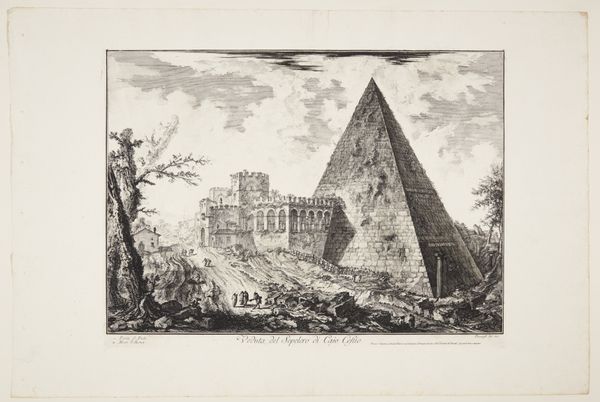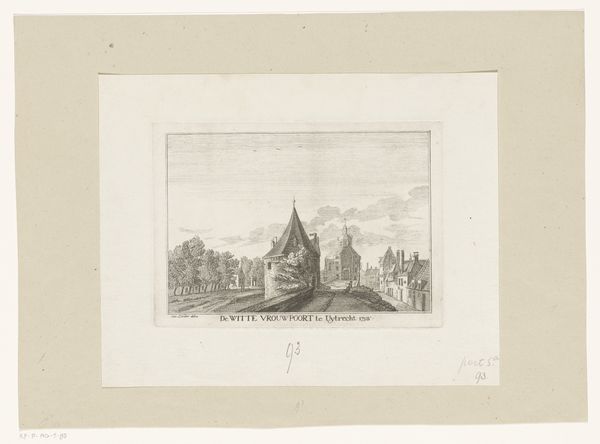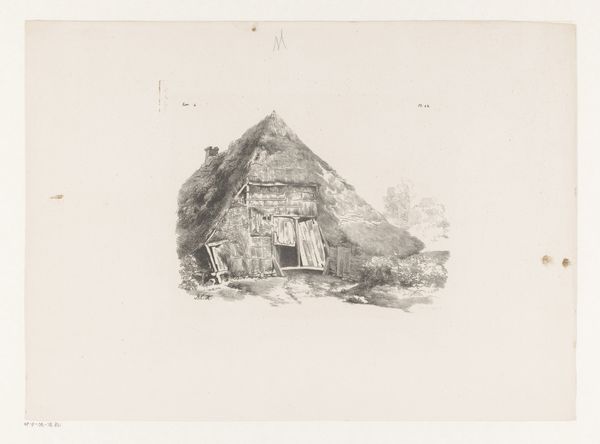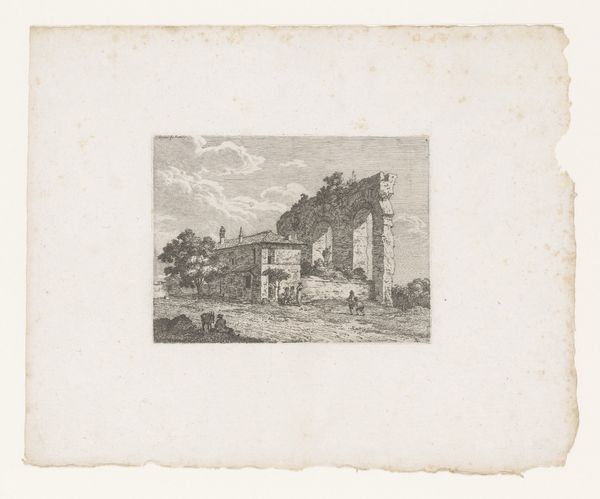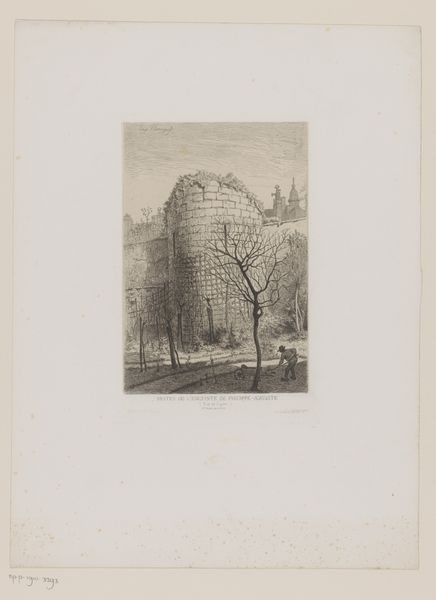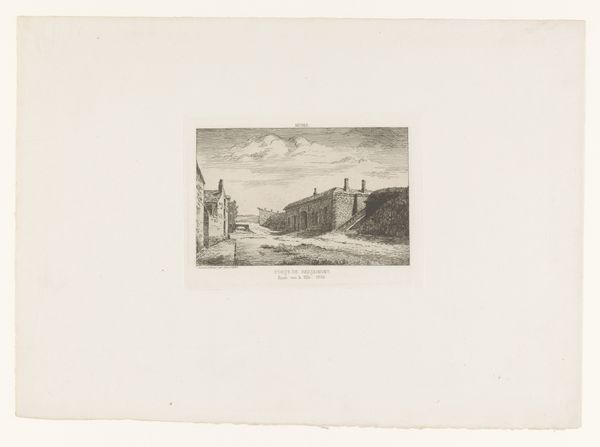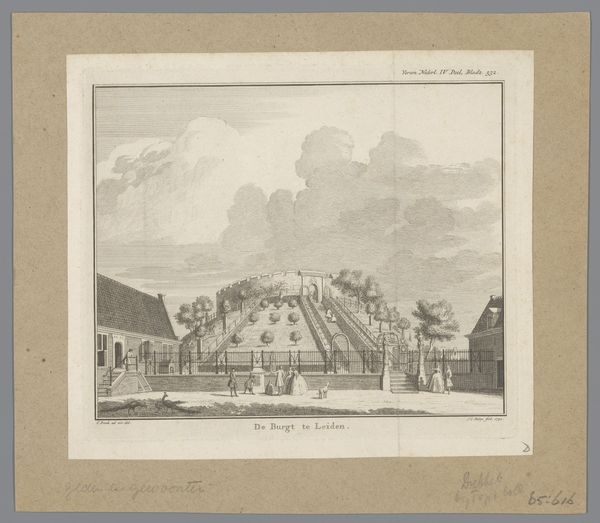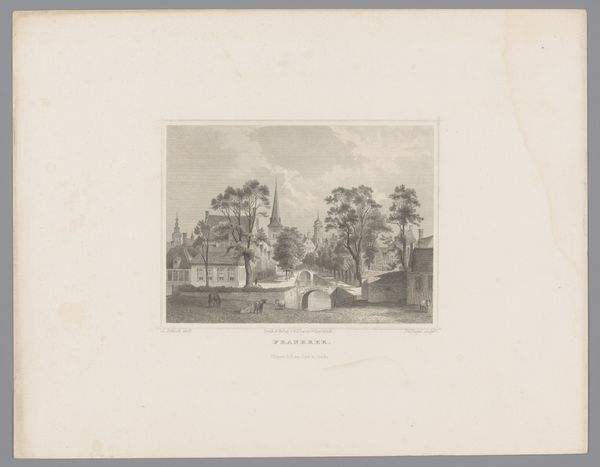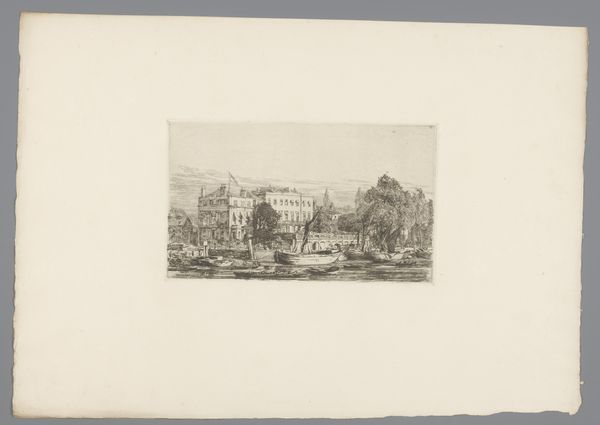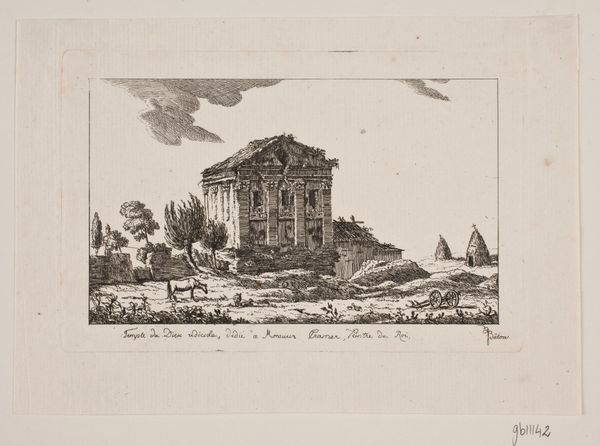
Pyramid of Gaius Cestius near Porta S. Paolo 1741 - 1748
0:00
0:00
Dimensions: 115 mm (height) x 194 mm (width) (plademaal)
Curator: Ah, Piranesi, always with an eye for the grandiose! Here we have his "Pyramid of Gaius Cestius near Porta S. Paolo," dating from between 1741 and 1748. It's an engraving, a print—a testament to his fascination with Roman antiquity and architecture. Editor: Right off, I feel this melancholy, almost a resigned awe. That stark pyramid... it's like a tombstone for an era, you know? All those delicate lines feel like whispers from a forgotten empire. Curator: Precisely. Piranesi wasn't just documenting; he was interpreting. Consider the context. He produced these vedute, these views, during a period of intense interest in classical antiquity. Excavations were revealing Rome's past, and Piranesi’s prints catered to the Grand Tourists, who were eager to bring back souvenirs of their Roman holiday. Editor: Souvenirs with a serious undertone, I'd say. It's not just a pretty picture; there's a drama. That towering pyramid almost dwarfs the other structures, symbolizing, what? The futility of human ambition against the backdrop of eternity? A little heavy for a postcard, maybe. Curator: Piranesi understood the power of imagery. He was a master of architectural fantasy, often exaggerating scale and detail. This print highlights the Pyramid of Cestius, an actual, well-preserved Roman tomb built around 12 BC. Notice how he positions it near the city walls, emphasizing its historical significance as a landmark marking the boundary between the ancient world and the present. Editor: What gets me is the humanity he threads in – those tiny figures almost swallowed by the scene. We have those characters to really underscore the passage of time, their fleeting lives compared to this looming stone giant of the ages. It reminds me how everything crumbles. Morbid but also, somehow, beautiful? Curator: He plays with light and shadow, creating a romantic atmosphere around the ruin. Neoclassicism loved a good ruin; they saw in them a connection to virtue, wisdom, and a bygone era of republicanism. Piranesi sold this feeling! Editor: Well, he sold it well! Looking at this print, I’m transported. I want to write a poem, or maybe just wander through old cities… You can feel the gravitas through the print. What a gift! Curator: A collision of grandeur and mortality; that’s Piranesi’s Rome. It makes you wonder about our own legacy, doesn’t it? Editor: Definitely. And I think the real artistry here is making that feeling so darn palpable. It is really quite thought provoking and somewhat awe inspiring.
Comments
No comments
Be the first to comment and join the conversation on the ultimate creative platform.
